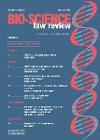Bio-Science Law Review - Volume 16 - Issue 1

Special Issue on gene editing
Editorial
CRISPR: Supercharging Genome Editing
HELEN CLINE , Pinsent Masons
CRISPR Patent Dispute: Lessons from the past and an eye to the future
ASAWARI CHURI Pinsent Mason, London
CRISPR, the biggest biotech breakthrough in recent years, is embroiled in a bitter ownership dispute. Multiple parties seek control of the technology, giving rise to a complex and uncertain patent landscape. This article provides an overview of the current patent situation and, in light of lessons from the past, explores future outcomes.
Gene Editing and the Regulation of Genetic Modification in Europe
TREVOR COOK Partner, Wilmer Cutler Pickering Hale and Dorr LLP
CRISPR, the biggest biotech breakthrough in recent years, is embroiled in a bitter ownership dispute. Multiple parties seek control of the technology, giving rise to a complex and uncertain patent landscape. This article provides an overview of the current patent situation and, in light of lessons from the past, explores future outcomes.
The Regulation of Novel Genome Editing Techniques in Australia
JAMES ELLSMORE and TIM CRAVEN King & Wood Mallesons, Sydney, Australia
Australia's current system of regulating gene technology involves a patchwork of regulatory and advisory bodies administering and overseeing national regulations, guidelines and principles of cumulatively broad application. This article examines how the current framework operates to regulate genome editing techniques such as CRISPR/Cas9 and the genetically modified products produced using those techniques as they progress from the initial research stage to commercial supply. Although this system provides a sufficiently comprehensive framework in which to accommodate current uses of the technology, the application of laws regulating GMOs and GM foods produced by, or involving genome editing is uncertain in some respects. The article also looks at options for reform posed by Australia's chief gene technology regulator and the current public position of the intra-governmental agency responsible for administering standards that apply to GM foods.
The Technical Background
Gene editing the CRISPR way
DR E JOANNA BAXTER Senior Research Associate, Department of Haemtology, University of Cambridge
CRISPR, a new laboratory technology, has begun to revolutionise the use of gene modification in research with potentially far-reaching effects. This article explains how the technique works and why it has changed medical research, and outlines some of the ways it might be applied to treating human diseases. As we approach an era in which genomic medicine may have the ability to change the human genome for generations, current limitations and ethical dilemmas around CRISPR and related techniques are summarised as a guide for those not familiar with the field.
Book Review
TIM ROBERTS reviews Genome Editing: An Ethical Review Nuffield Council on Bioethics
